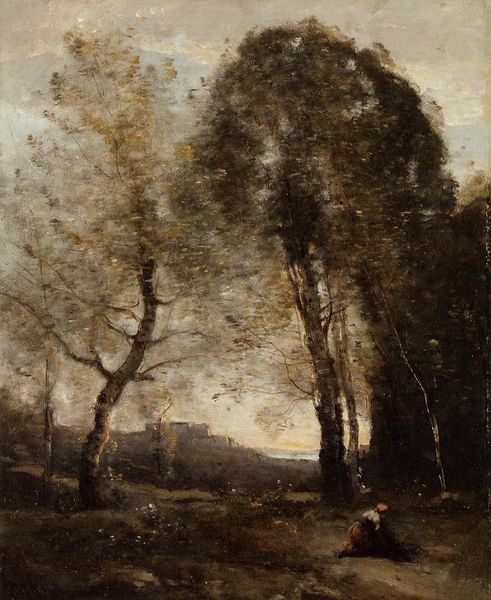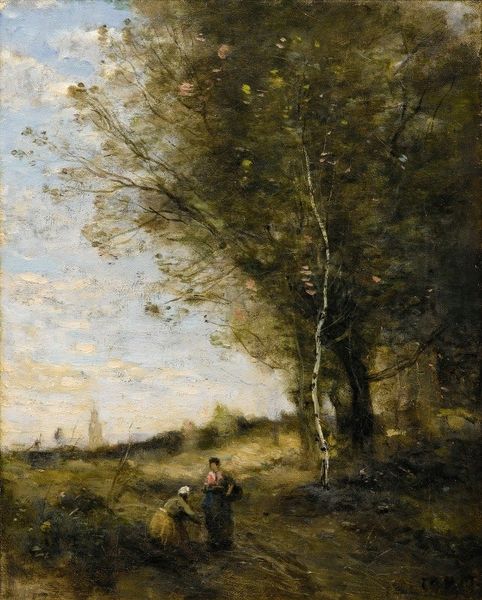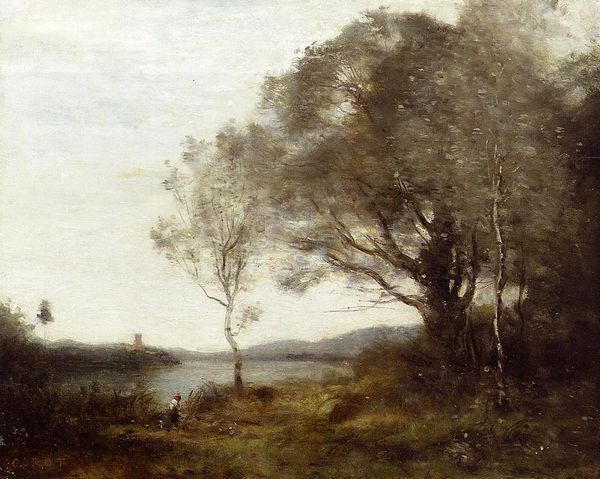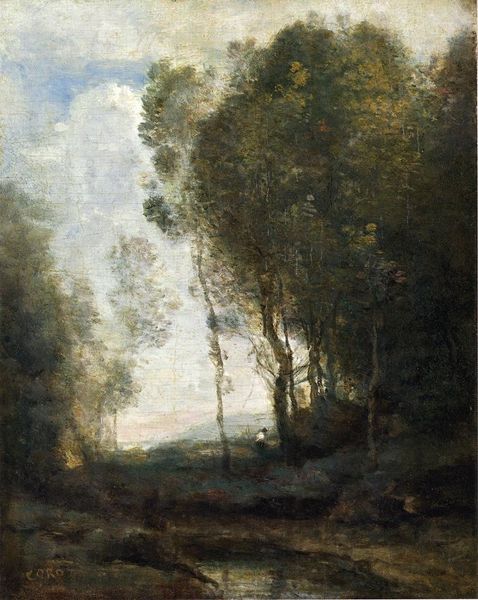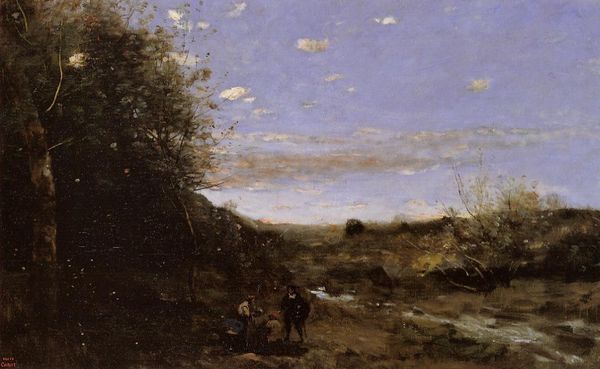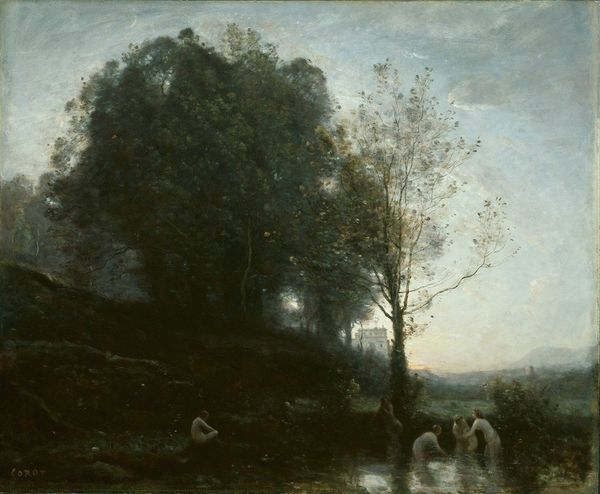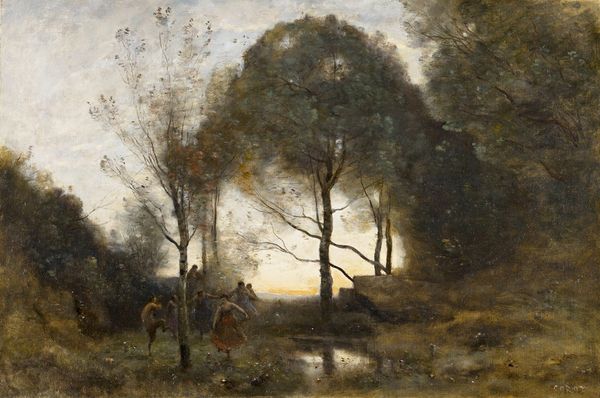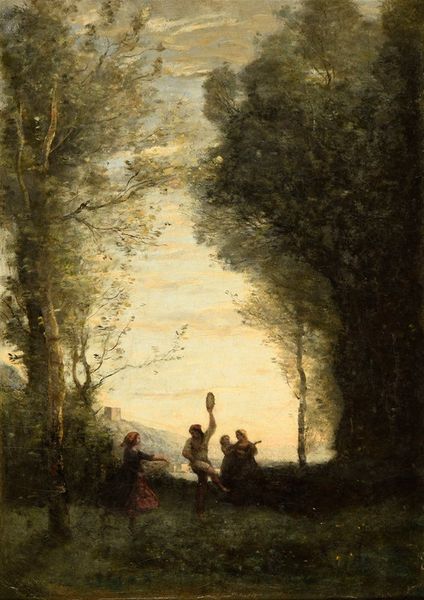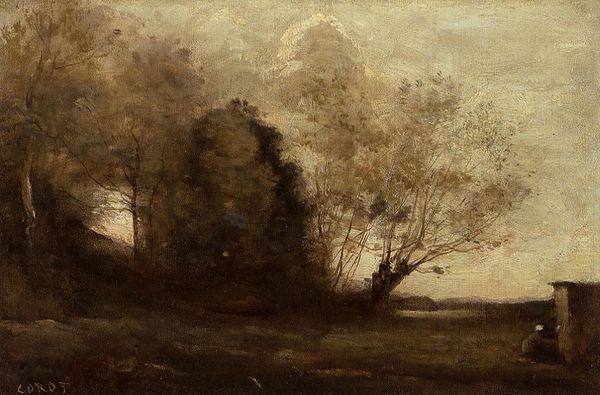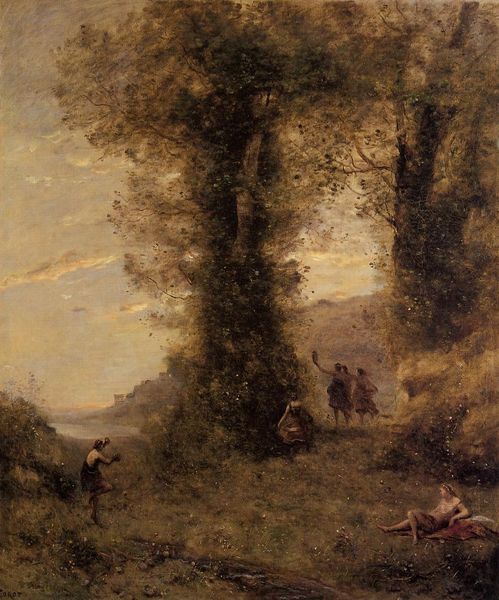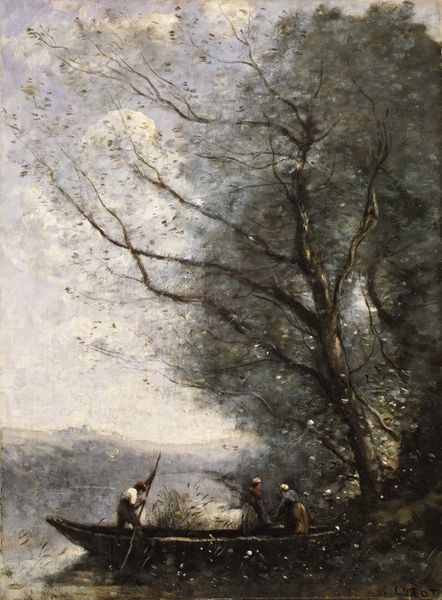
Copyright: Public domain
Curator: Standing before us is "The Valley" painted by Camille Corot in 1871. It is oil on canvas and currently resides in a private collection. What strikes you about this landscape, Editor? Editor: Immediately, a feeling of hushed reverence. It's like stepping into a cathedral of trees. There's a tangible quietness; you can almost hear the rustling leaves and feel the damp earth beneath your feet. It feels intensely personal, as if the artist invited me into their own secret and deeply meaningful place. Curator: That's quite insightful. Corot was known for his deeply personal engagement with nature, which often contrasts with academic landscape traditions of the time. We see in "The Valley" that he captures more of the feeling of a place rather than aiming for topographical accuracy. It leans into the Barbizon School's move toward a more naturalistic portrayal of nature and prefigures elements of Impressionism, as is demonstrated by its light and shadow interplay. Editor: The subdued palette contributes to the meditative quality. But there's a flicker of the human here, those tiny figures! Almost swallowed up, or maybe deliberately surrendering, to the landscape’s profound calm. Who are they? Are they just additional features to ground the scale, or do they propose some larger reflection? Curator: Indeed! In many of Corot's works, figures are genre elements that blend effortlessly into their surroundings, reflecting the romantic ideal of harmonious coexistence with nature and a touch of "picturesque" compositional method. However, placing common people inside also helped create demand from a rising bourgeois patronage during that period. Editor: Picturesque indeed! The blurred lines between Romanticism, Realism, and even proto-Impressionism really capture the sense of this time. As if painting history as it moved and transformed into something modern. Do you believe that a strong national identity plays a part? Curator: The push for "art for the people" grew as French national identity was strengthening through conflicts and politics, and as academic institutions relaxed traditional styles in response to avant-garde sentiments in the public. All are mirrored in these subdued forests. Editor: Subdued maybe, but there's also something very intense here—something timeless. Thanks, this perspective really let me look deeper. Curator: My pleasure. "The Valley" exemplifies art as both personal reflection and cultural phenomenon.
Comments
No comments
Be the first to comment and join the conversation on the ultimate creative platform.
